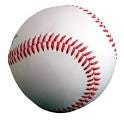Taking Betts
Nick Cafardo had an interesting piece in the Boston Globe the other day about Mookie Betts. The theme of the story is that one of the first things that Alex Cora did after moving from coach in Houston to manager in Boston was try to make Betts more aggressive at the plate … like George Springer was last year.
To quote:
“Right after he got hired he called and he just wanted everyone to pay attention to detail,” Betts said. “He showed me the numbers and scouting reports that indicated to me that I should swing more.”
Is it that simple? Is the difference between 2017 Mookie Betts (when he hit .264/.344/.459) and Super Mookie of 2018 (leads league in runs, doubles, homers, total bases, batting average, slugging and OPS) simply a matter of him being more assertive and swinging the bat more often?
Well, sort of yes, sort of no, sort of yes but it’s a lot more complicated than that.
Sort of yes — Betts is swinging at a slightly higher percentage this year.
Sort of no — It’s only a VERY slightly higher percentage. He swung at 36% of pitches faced last year, and this year he’s swinging at 37% of his pitches. That one or so percent difference is hardly anything at all, especially so early in the season.
Sort of yes — One thing that happened last year is that Betts was NOTICEABLY less aggressive at the plate. In both 2015 and 2016, he swung at more than 40 percent of the pitches he saw. So 2017 represented a significant drop in aggression. This year, his percentage is back up — not nearly as high as it was his first two years, but it’s a step in the aggression direction.
Sort of no — one point that Cora touches on in the story is that last year Betts would often take a first-pitch strike.
“From personal experience from last year, he’ll take the first-pitch strike and he’ll beat you in the third at-bat,” Cora said.
Well, Betts is not necessarily swinging at first pitches more often this year. Last year he swung at 12.2% of his first pitches. This year, in a small sample, it’s 12.8%. Basically the same.
So what’s the deal? Is Betts swinging more or isn’t he?
Answer: Yes, but it’s more complicated than that. He is swinging more. He’s also swinging less.
Here’s what I mean: Betts is absolultely and unquestionably swinging more on pitches in the strike zone. That’s the idea, obviously, and Betts has made clear strides here. Last year he swung at 53% of pitches in the zone, the lowest percentage of his career. This year, so far, he’s swinging at 61%, the highest percentage of his career. There is absolutely no question that Betts is following Cora’s advice and not letting strikes go by.
But here’s the counterintuitive part: Yes he’s being more aggressive on strikes. But his chase percentage — that is the percentage of the time he swings at pitches outside the strike zone — is WAY DOWN. He chased 20% of the time last year. That’s down to 15%, by far the lowest percentage of his career.
He’s swinging more. He’s also swinging less.
This isn’t aggression. It’s hitting genius.
And that hitting genius has helped Betts hit the ball much, much harder than he ever has in his career — the guy already has 30 Statcast barrels which, you might know, is the ideal combination of exit velocity and launch angle. That is the most barrels in baseball but even more to the point it’s already more than he had the entirety of last year and only two shy from his near-MVP season of 2016. The 2018 season, it should be said again, is only barely one-quarter in.
What I think is cool about all this is that while the numbers tell a story, for Betts the story IS aggression. He is very clearly focused on swinging more, taking more control of the at-bat, not giving pitchers free strikes like he did last year, when all of his offensive numbers were down except for his walks were way up. He’s on the attack as a hitter.
“It’s easy really,” he told Cafardo. “Just swing more.”
But it isn’t easy because that aggression doesn’t carry over to bad pitches. He swings less at those than he has at any point in his career. He’s become a BETTER hitter, not a more aggressive one.
Swing at the good pitches. Don’t swing at the bad ones. Pretty simple. You know, I was lucky enough a few years ago to sit in on a hitting coach’s meeting with players. It was fascinating because it wasn’t fascinating at all. It was all kind of basic. The coach kept talking about being selectively aggressive, stick to the hitting plan, going hard after pitches in the zone, laying off pitches outside the hitter’s zone, and so on. Afterward I mentioned to him that it was remarkable how even at the highest level, coaches really focused on those simple things.
“Hitting a baseball is hard,” he said. “The best thing you can do for a hitter is to try and make it sound simple.”
Originally published at joeposnanski.com on May 22, 2018.
